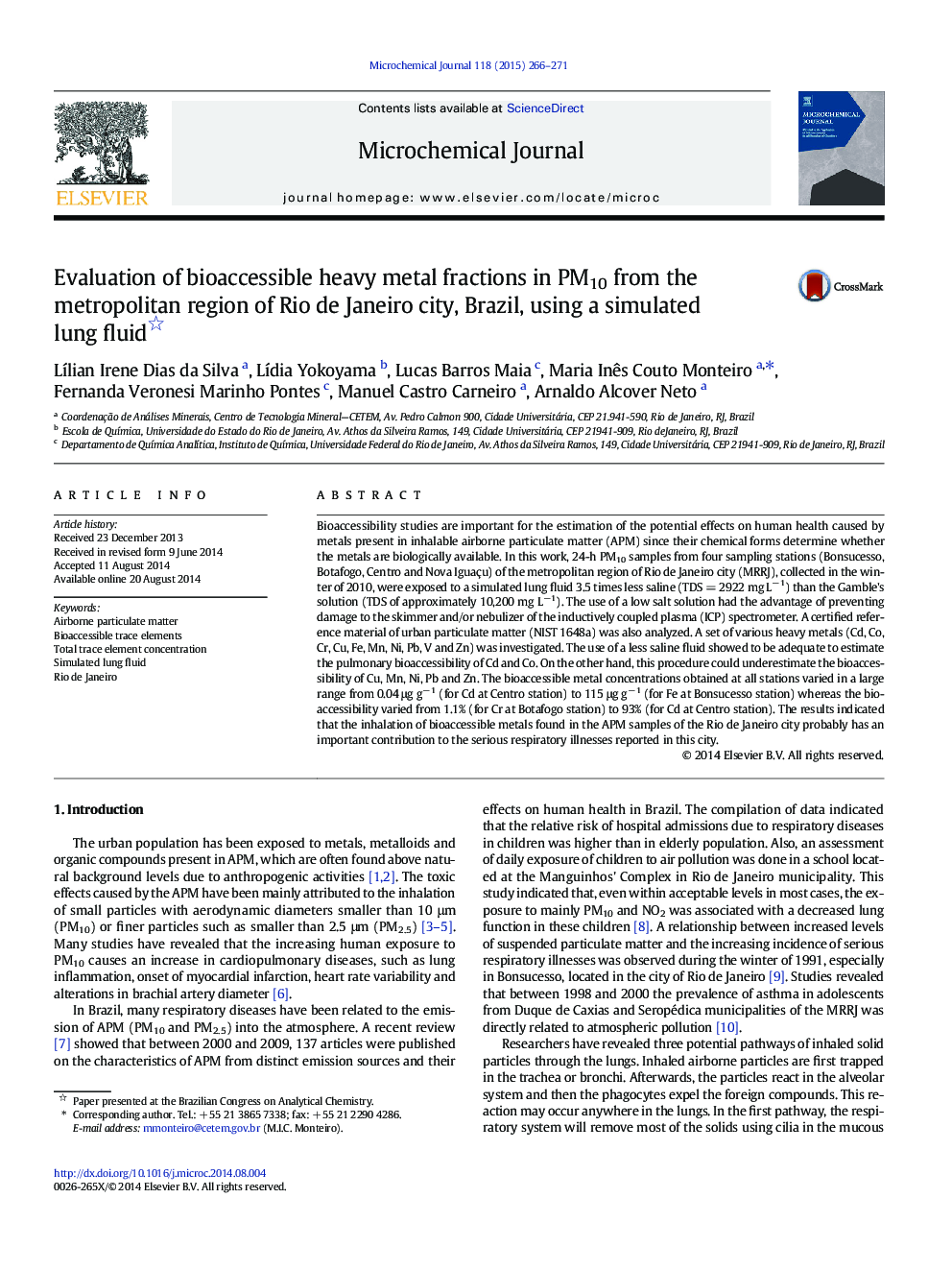| Article ID | Journal | Published Year | Pages | File Type |
|---|---|---|---|---|
| 7642951 | Microchemical Journal | 2015 | 6 Pages |
Abstract
Bioaccessibility studies are important for the estimation of the potential effects on human health caused by metals present in inhalable airborne particulate matter (APM) since their chemical forms determine whether the metals are biologically available. In this work, 24-h PM10 samples from four sampling stations (Bonsucesso, Botafogo, Centro and Nova Iguaçu) of the metropolitan region of Rio de Janeiro city (MRRJ), collected in the winter of 2010, were exposed to a simulated lung fluid 3.5 times less saline (TDS = 2922 mg Lâ 1) than the Gamble's solution (TDS of approximately 10,200 mg L â1). The use of a low salt solution had the advantage of preventing damage to the skimmer and/or nebulizer of the inductively coupled plasma (ICP) spectrometer. A certified reference material of urban particulate matter (NIST 1648a) was also analyzed. A set of various heavy metals (Cd, Co, Cr, Cu, Fe, Mn, Ni, Pb, V and Zn) was investigated. The use of a less saline fluid showed to be adequate to estimate the pulmonary bioaccessibility of Cd and Co. On the other hand, this procedure could underestimate the bioaccessibility of Cu, Mn, Ni, Pb and Zn. The bioaccessible metal concentrations obtained at all stations varied in a large range from 0.04 μg gâ 1 (for Cd at Centro station) to 115 μg gâ 1 (for Fe at Bonsucesso station) whereas the bioaccessibility varied from 1.1% (for Cr at Botafogo station) to 93% (for Cd at Centro station). The results indicated that the inhalation of bioaccessible metals found in the APM samples of the Rio de Janeiro city probably has an important contribution to the serious respiratory illnesses reported in this city.
Related Topics
Physical Sciences and Engineering
Chemistry
Analytical Chemistry
Authors
LÃlian Irene Dias da Silva, LÃdia Yokoyama, Lucas Barros Maia, Maria Inês Couto Monteiro, Fernanda Veronesi Marinho Pontes, Manuel Castro Carneiro, Arnaldo Alcover Neto,
